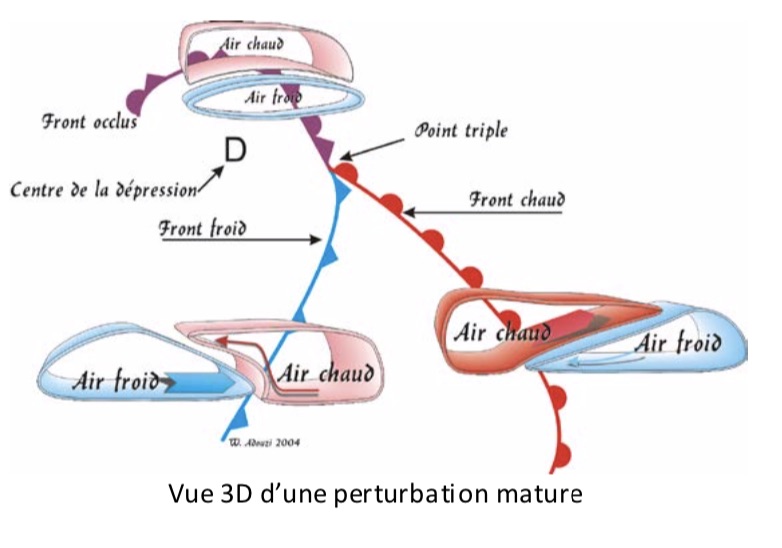The front #
A front is a region of the troposphere constituting a dynamic and thermal transition zone between two air masses with different characteristics (Source: Météo-France).
A front is a surface of discontinuity (transition zone) where two air masses with different properties confront each other. There are different types of fronts:
- warm fronts,
- cold fronts,
- occluded fronts,
- stationary fronts.

Cold front

Warm front

Occluded front
Creating a disturbance #
Creating a disruption
Stage 3: the system begins to turn counterclockwise. The warm air is trapped by the cold air.
Step 4: Trapped between the two cold air masses, the warm air is rejected at altitude: this is the beginning of the occlusion. The fact of turning will create a depression associated with the disturbance. At the end of the life of a disturbance, the air masses amalgamate and/or no longer become sufficiently different to maintain the fronts: this is frontolysis.
Disturbance seen from above #

Perturbation seen from above
